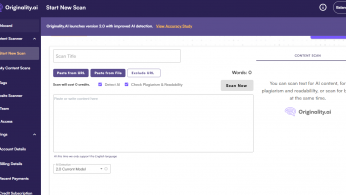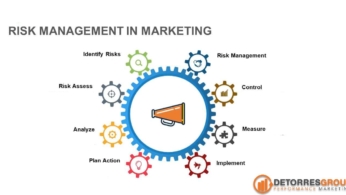Google Tag Manager Tutorial: Boost B2B Marketing Efficiency
Welcome to this comprehensive Google Tag Manager Tutorial, where we will delve deep into the world of tag management and efficient tracking code deployment. As an experienced professional in the B2B sector, you understand the importance of accurate data collection and streamlined marketing efforts for your business.
In this tutorial, we will explore key features of Google Tag Manager such as its version control system, preview mode for testing configurations, and management functionality that ensures seamless organization. We will also discuss the numerous benefits it offers including improved website performance, increased data accuracy, and enhanced team collaboration.
Finally, our Google Tag Manager Tutorial wouldn’t be complete without sharing some advanced tips & tricks in GTM usage. Stay tuned for expert insights on online video tutorials focused on advanced techniques and free courses available covering both GTM & Analytics.
Google Tag Manager Overview
If you’re a B2B business owner or marketer, chances are you’ve heard of Google Tag Manager (GTM). But what exactly is it? In short, GTM is a lifesaver for those juggling multiple marketing tags on their websites. It’s like having your very own digital Swiss Army knife to help manage and deploy tracking codes without turning your site into code soup.
Centralized Tag Management
Gone are the days of sifting through lines of code to find that elusive snippet. With GTM, all your tags live in one cozy place, making it easier than ever to keep track of them.
Efficient Tracking Code Deployment
No more manual updates. Simply add the central GTM snippet onto your page and let the platform work its magic. Configure triggers and tracking codes within GTM itself for seamless deployment across your website.
Key Features of Google Tag Manager
If you’re looking to level up your B2B marketing game, then it’s time to get acquainted with some essential features of Google Tag Manager. Trust us, these tools will make managing tags feel like a walk in the park.
- Version control system: No more worrying about losing track of changes or accidentally overwriting important data. With GTM’s version control system, every update is logged and easily accessible for future reference.
- Preview mode for testing configurations: Don’t let those pesky bugs ruin your day. Test new tag configurations using GTM’s preview mode before deploying them live on your site. This way, you can guarantee a smooth experience without any issues.
- Management functionality for organization: Keep things neat and tidy by organizing all your tags within folders based on their purpose or campaign. Plus, user permissions allow different team members access to specific areas of the platform – making collaboration a breeze.
Dive deeper into these features with this comprehensive guide on how to use Google Tag Manager effectively from our friends at Dummies.com.
Benefits of Using Google Tag Manager
If you’re still on the fence about implementing Google Tag Manager, let’s dive into some of its undeniable advantages:
- Streamlined marketing efforts: Say goodbye to juggling multiple tags and tracking codes. With GTM, all your tags live in one central hub, making it easy to manage them efficiently.
- Improved website performance: By consolidating your tags under GTM’s umbrella, you can optimize loading times and keep your site running smoothly for visitors.
- Increased data accuracy: Consistent implementation across platforms or devices ensures that your data is reliable and accurate – no more guesswork.
- Enhanced team collaboration: Whether it’s developers or marketers working together on digital campaigns, GTM makes teamwork seamless by providing an organized platform for everyone involved.
No doubt about it: adopting Google Tag Manager will supercharge your B2B marketing strategy with these game-changing benefits. So why wait? Start exploring this powerful tool today.
Advanced Tips & Tricks in Google Tag Manager Usage
If you’re ready to level up your Google Tag Manager game, there’s a treasure trove of advanced tips and tricks waiting for you. Don’t worry; we’ve got your back with some resources that’ll help you master the art of tag management like a pro.
- Online video tutorials playlist focused on advanced techniques: Say goodbye to confusion and hello to expert-level knowledge with these comprehensive videos covering everything from event tracking to custom JavaScript variables.
- Free courses available covering both Google Tag Manager & Analytics: Want more structured learning? Enroll in these free courses designed by Google themselves, offering an in-depth understanding of both Google Tag Manager and Google Analytics – talk about killing two birds with one stone.
FAQs in Relation to Google Tag Manager Tutorial
What is Google Tag Manager?
Google Tag Manager (GTM) is a free tool that allows you to manage and deploy marketing tags, such as tracking codes or conversion pixels, on your website without having to modify the site’s code. This centralizes tag management, streamlines marketing efforts, and improves website performance. You can learn more about GTM in this overview.
What are the three main components of Google Tag Manager?
The three main components of Google Tag Manager are:
- Tags – snippets of code added to your site for tracking purposes
- Triggers – conditions that determine when a tag should be fired
- Variables – dynamic values used within tags and triggers
You can find detailed information about these components in this guide.
Is Google Tag Manager easy to learn?
While there may be a learning curve for beginners, mastering GTM becomes easier with practice. There are numerous resources available online like video tutorials (playlist) and free courses (Analytics Academy) that provide step-by-step guidance on using GTM effectively.
Why not use Google Tag Manager?
Some reasons for not using GTM include limited technical knowledge, concerns about data privacy and security, or a preference for alternative tag management solutions. However, the benefits of centralized tag management, improved website performance, and increased data accuracy often outweigh these concerns. Explore more on Optimize Smart.
Conclusion
In conclusion, this Google Tag Manager tutorial provides B2B business owners and marketers with an overview of GTM’s centralized tag management and efficient tracking code deployment. The tutorial also discusses key features such as version control system, preview mode for testing configurations, and management functionality for organization. Benefits of using GTM include streamlined marketing efforts, improved website performance, increased data accuracy, and enhanced team collaboration. Advanced tips and tricks for GTM usage are available through online video tutorials playlist focused on advanced techniques as well as free courses covering both GTM and Analytics.
If you’re looking to improve your website’s performance and streamline your marketing efforts with Google Tag Manager, contact us at DeTorres Group. Our experienced professionals can assist you in applying the optimal techniques to optimize your returns.

Dustin DeTorres is the CEO of DeTorres Group, a B2B Lead Generation & digital marketing agency & Badass Insurance Leads, a life insurance leads provider. To learn more about Dustin DeTorres, click here or visit Badass Insurance Leads here.







Leave A Comment